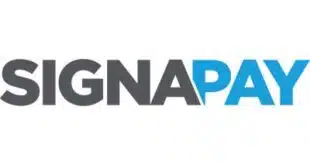Cross-border payments are a huge business. Here’s what banks and a handful of non-bank specialists are learning from fintechs about how to get better at it.
Whether it’s a transaction initiated by an overseas worker sending money home or a business sending a payment to an out-of-country supplier, the dollar volume of cross-border payments is staggering.
When adding up consumer-to-consumer, business-to-business, business-to-consumer, and consumer-to-business payments being moved between countries, the total exceeds hundreds of trillions of dollars annually.
Citing statistics from Ernst & Young, Juniper Research projects the value of all cross-border payments will grow 5% in 2022 to more than $155 trillion, up from more than $148 trillion in 2021. Of that amount, business-to-business transactions will represent by far the largest amount, at a projected $150 trillion-plus, up from $143.5 trillion in 2021.
Cross-border consumer-to-business transactions will represent the next largest subset, totaling a projected $2.8 trillion, up from $2.6 trillion in 2021, Juniper says.
Despite these immense dollar values moving digitally between countries, cross-border payments have several nagging weaknesses compared to domestic digital transactions. Most notable are the lack of speed, restricted access to local international banking rails, and an absence of transparency regarding fees for initiating a transaction. In addition, it can be difficult to get the status of the payment once it has been initiated.
Given that such shortcomings have been overcome for domestic digital payments in most countries, consumers and businesses are becoming less tolerant of cross-border payments’ weaknesses, payments experts say. As a result, they say, international payments are ripe for disruption from fintech providers—and have been for probably the last five to seven years.
Enter the fintechs, which see an opportunity to carve out market share and in turn put pressure on the old-line players, which include banks and non-bank stalwarts Western Union Co. and MoneyGram International Inc. Prior to the entry of these newcomers, established players for years faced a smaller and relatively well-known roster of competitors.
Now, the pressure is on to improve the speed of transactions and the transparency of fees—pressure that has only increased since the onset of the Covid pandemic. Businesses, particularly small and mid-size ones, are becoming quite reliant on cross-border transactions to conduct such transactions as payroll, reimbursements, and bill pay.
Out-of-Country Experience
A recent survey by American Express Co.—which in August launched a digital, cross-border payment solution for small businesses in the United States—reveals that, as of June, 64% of small and mid-size business owners and financial decisionmakers in the U.S. expect their total spend with businesses outside the country to increase over the next six months.
Among the reasons cited for their growing reliance on cross-border payments, 43% of respondents said access to a wider range of products and services, while 35% cited supply-chain diversification.
Many businesses have turned to alternative suppliers out of country and have begun selling more to international buyers due to the disruption of their supply chains and sales at home as a result of the pandemic.
Mastercard Inc.’s 2022 Borderless Payments Report says 43% of businesses now do more business internationally since the pandemic struck. Some 37% said they would have been forced to shut their doors were it not for opportunities to source and sell cross-border.
As a result, 58% of businesses say they are now making and receiving more cross-border payments than they were prior to the pandemic.
At the same time, many businesses have begun hiring international employees, which creates a need to facilitate payroll using cross-border payments, says Ryan Zagone, head of partnerships for Wise, a London-based fintech specializing in cross-border payments.
On the consumer side, Mastercard found that 54% of global consumers are more reliant on cross-border payments than they were pre-pandemic. In addition, 40% of those who made cross-border payments to family and friends, say those recipients would not have been able to weather the pandemic storm financially otherwise.
‘Frustrated Users’
This growing reliance on cross-border payments has created the need to modernize the process. That means delivering the digital payments experiences consumers and businesses have grown accustomed to domestically.
“The limitations of the existing cross-border payments model when it comes to speed, transparency, formatting, and access, has long frustrated users of the system,” says Russ Waterhouse, executive vice president, product development and strategy for The Clearing House Payments Co., a New York City-based processor owned by many of the biggest U.S. banks.
“Even though fintechs ride on others’ rails, they are good at developing interfaces that create better user experiences, and it is the user experience that will differentiate the modern cross-border payment model from the traditional model,” Waterhouse adds.
Earlier this year, TCH announced a pilot with EBA Clearing and SWIFT SC for immediate cross-border payments through banks on both sides of the Atlantic. EBA Clearing is a provider of pan-European payment infrastructure wholly owned by major European banks. SWIFT SC, or the Society for Worldwide Interbank Financial Telecommunication, is a Belgium-based cooperative providing services for the execution of financial transactions and payments between banks worldwide.
The pilot, scheduled to begin in November, will be joined by 11 of the 24 financial institutions that have input into the development of its systems, according to Waterhouse.
A key driver behind the push for real-time cross-border payments is that, on average, cross-border payments typically take a couple of days to clear and settle. That timeline can stretch out further if the country to which the money is being sent does not have a central clearing house or if the financial institution initiating the transaction lacks a direct relationship with a local bank in the country.
In these instances, banks must rely on correspondent banks to act as a go-between for domestic and foreign banks on the sending and receiving end of the transaction.
The drawback to this scenario is that it creates multiple endpoints. The more times a cross-border transaction is handed off between banks, the longer it takes to complete the transaction and the less visibility senders and receivers have into the status of the transaction, payments experts say. It also creates a greater chance of human or technical error.
“Once you go out of the native payment rails you have to rely on correspondent banks, which reduces the predictability of the outcome of the transaction for the sender and the receiver,” says Joanne Strobel, head of the CIB segment solution and advisory team, for Wells Fargo Bank. “This is a weakness of the traditional cross-border model.” CIB refers to corporate and investment banking.
‘Arcane’ Fees
Another weakness within the traditional cross-border payment model is that senders are not always aware of all the fees associated with the transaction. That can create an unpleasant surprise on the receiving end if those fees are deducted from the amount sent.
“Costs are high and unpredictable, and fees build up along the payment path,” says Erika Baumann, director, commercial banking and payments, for Aite-Novarica Group. “The final settlement amount can vary from the original transaction amount due to arcane fee structures during the correspondent banking process. Plus, there is a lack of transparency in where the payment is until it has settled.”
Given the weaknesses related to transparency of fees and status of payment, cross-border payment specialist Wise sees an opportunity to differentiate itself with lower-cost transactions, more transparency regarding payments, and faster, even real-time, payments. Wise’s fees for cross-border transactions start at 0.41% of the amount being sent.
Wise has partnered with Firstbase Inc., an operating system that runs business applications on a single platform. The partnership calls for Wise to make its Platform API available to Firstbase so its customers can connect business tools and manage their finances, including cross-border payments, through a single point of entry.
As a result, Firstbase customers can move money abroad faster and at a lower cost than the traditional cross-border payment model, both companies say.
“The market has learned that the traditional cross-border payments model often has hidden fees, so now they are looking to non-banks for lower-cost transactions and a more transparent fee structure,” says Wise’s Zagone. “They have learned to play the game.”
So have banks. Wells Fargo has struck partnerships with non-banks to make cross-border payments more accessible. For example, the big bank is participating in the EBA Clearing, SWIFT, and The Clearing House pilot to enable immediate cross-border payments.
The impetus to be a participant, says Wells Fargo’s Joanne Strobel, was the growing need for immediate international payments and better data concerning the transaction. The latter is particularly important for banks handling the transaction because it allows them to verify sums within the funding account. Such information is invaluable to senders because it boosts the predictability of when the transaction will be cleared and settled.
“Being able to cross-check the account against available funds removes a lot of friction from the process,” Strobel says. “Another plus to instant payment is that it lets you know right away whether the transaction can be sent and will arrive. It also makes cross-border payments quicker and safer.”
Disrupt Yourself
Banks aren’t the only traditional players working with fintechs on international payments. In June, MoneyGram partnered with Stellar Development Foundation, which provides an open-source, public blockchain that allows money to be tokenized
and transferred globally. The partnership opens the door to initiating cross-border transactions using cryptocurrency through participating MoneyGram locations.
Settlement occurs in near real time using USD Coin, a stablecoin pegged to the U.S. dollar. To entice senders to make use of the service, which rolled out in June, MoneyGram is waiving fees for 12 months.
The deal opens the door to the use cryptocurrency for cross-border payments, but it also allows users of Stellar’s Vibrant and Lobstr digital wallets to load or cash out their cross-border payments at MoneyGram locations.
In addition, MoneyGram has lowered its fees for a cross-border transaction to 2.9%, which is below the goal set by the United Nations of reducing transaction costs for remittances to less than 3% by 2030, the company says.
Overall, MoneyGram has a digital presence in more than 100 countries and digital transactions represent 44% of its overall money transfers. India represents the remittance company’s largest market for digital payments, with about 90% of cross-border transactions being received digitally. “Over the last several years, MoneyGram has continued to disrupt itself and drive innovation in the industry,” a MoneyGram spokesperson says.
Keys to Success
But one non-bank cross-border payments provider that tends to get overlooked is American Express. The card issuer, which has a long history of providing broad financial services to its customers, launched its digital cross-border payment solution for small businesses in the U.S. as a way to modernize cross-border transfers.
The result was Global Pay, a mobile, self-service platform that allows small businesses to send payments from their business bank account to suppliers in more than 40 countries and across a range of currencies.
“Our U.S. small-business card members told us they want an international payment solution, and for them, simplicity, convenience, and the chance to earn rewards are essential,” says Dean Henry, executive vice president, global commercial services at AmEx.
As a leading card issuer to small businesses in the U.S., AmEx plans to leverage those relationships to further its ambition of modernizing cross-border payments. “While larger companies have access to many cross-border payments offerings, our clients have asked for a solution more specifically designed for the needs of smaller businesses,” Henry says.
That traditional players, and even non-banks with a foothold in cross-border payments, are willing to partner with fintechs is an indication that cross-border payments are no longer a matter of David vs Goliath.
“Increasingly big financial-services brands are working together with fintechs to disrupt and improve markets,” says Rasika Raina, senior vice president for Mastercard Cross-Border Services. “Mastercard works with a variety of partners to make sure our customers can get to market faster with a compelling and competitive proposition in an increasingly dynamic category.”
Looking ahead, international-payments experts forecast continued robust growth. “It’s growing [and] profitable, and that’s going to attract a lot of competitors,” says The Clearing House’s Waterhouse. “The three keys to success will be speed, fee transparency, and compliance to ensure access to local expertise.”
The winners, Waterhouse adds, will be the ones that create products specialized according to these criteria.






